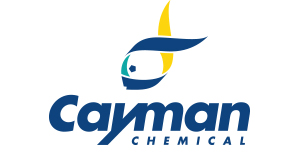IgG2aκ (mouse) Rabbit Monoclonal Antibody - Biotinylated (RM
IgG2aκ (mouse) Rabbit Monoclonal Antibody - Biotinylated (RM
Artikelnummer
CAY32351
Verpackungseinheit
50 µg
Hersteller
Cayman Chemical
Verfügbarkeit:
wird geladen...
Preis wird geladen...
Shelf life (days): 365.0
Formulation: 50 µg of protein A-affinity purified monoclonal antibody
Immunogen: Mouse IgG
Clone Designation: RM107
Target specificity: Mouse
Cross Reactivity: + IgG2aκ; - Mouse IgG2aλ; - Mouse IgG1; - Mouse IgG3; - Mouse IgM; - Mouse IgA; - Mouse IgE; - Human IgG; - Goat IgG; - Rat IgG
Formula Weight: 0.0
Notes: Immunoglobulin G (IgG) is a member of the immunoglobulin superfamily of glycoproteins that plays a central role in the adaptive immune response.{28520} It is produced by B cells and later secreted by plasma cells and is the most abundant circulating antibody in human and mouse serum.{28520,55170,55174} IgG consists of two heavy chains of approximately 50 kDa each and two light chains of approximately 25 kDa each.{28520} The heavy chains are linked together by disulfide bonds to form an Fc region and also combine with the light chains to form the Fab region, which mediate receptor and antigen binding, respectively.{55171} IgG is produced following IgM class-switching in response to infection and is involved in numerous humoral host defense responses, including antibody-dependent cell-mediated cytotoxicity (ADCC), toxin neutralization, and pathogen opsonization.{55170} IgG exists as four isotypes in mice: IgG1, IgG2b, IgG3, and, in a strain-specific manner, IgG2a or IgG2c.{55172,53858} In vivo, class switching to the IgG2a isotype can happen via IFN-γ-dependent and -independent mechanisms, with the former resulting from the cognate interaction of B cells with T helper 1 (Th1) cells.{52651} IgG2a is the predominant isotype produced in response to infection with DNA or RNA viruses in mice.{52652} Mammalian immunoglobulins contain either Igκ or Igλ light chains, each of which are composed of a constant and variable domain.{28687} Cayman's IgG2aκ (mouse) Rabbit Monoclonal Antibody - Biotinylated (RM107) can be used for ELISA and Western blot (WB; non-reducing conditions). The antibody recognizes the Fab region of IgG2aκ from mouse samples.
Formulation: 50 µg of protein A-affinity purified monoclonal antibody
Immunogen: Mouse IgG
Clone Designation: RM107
Target specificity: Mouse
Cross Reactivity: + IgG2aκ; - Mouse IgG2aλ; - Mouse IgG1; - Mouse IgG3; - Mouse IgM; - Mouse IgA; - Mouse IgE; - Human IgG; - Goat IgG; - Rat IgG
Formula Weight: 0.0
Notes: Immunoglobulin G (IgG) is a member of the immunoglobulin superfamily of glycoproteins that plays a central role in the adaptive immune response.{28520} It is produced by B cells and later secreted by plasma cells and is the most abundant circulating antibody in human and mouse serum.{28520,55170,55174} IgG consists of two heavy chains of approximately 50 kDa each and two light chains of approximately 25 kDa each.{28520} The heavy chains are linked together by disulfide bonds to form an Fc region and also combine with the light chains to form the Fab region, which mediate receptor and antigen binding, respectively.{55171} IgG is produced following IgM class-switching in response to infection and is involved in numerous humoral host defense responses, including antibody-dependent cell-mediated cytotoxicity (ADCC), toxin neutralization, and pathogen opsonization.{55170} IgG exists as four isotypes in mice: IgG1, IgG2b, IgG3, and, in a strain-specific manner, IgG2a or IgG2c.{55172,53858} In vivo, class switching to the IgG2a isotype can happen via IFN-γ-dependent and -independent mechanisms, with the former resulting from the cognate interaction of B cells with T helper 1 (Th1) cells.{52651} IgG2a is the predominant isotype produced in response to infection with DNA or RNA viruses in mice.{52652} Mammalian immunoglobulins contain either Igκ or Igλ light chains, each of which are composed of a constant and variable domain.{28687} Cayman's IgG2aκ (mouse) Rabbit Monoclonal Antibody - Biotinylated (RM107) can be used for ELISA and Western blot (WB; non-reducing conditions). The antibody recognizes the Fab region of IgG2aκ from mouse samples.
| Artikelnummer | CAY32351 |
|---|---|
| Hersteller | Cayman Chemical |
| Hersteller Artikelnummer | 32351-50 |
| Verpackungseinheit | 50 µg |
| Mengeneinheit | STK |
| Reaktivität | Mouse (Murine) |
| Klonalität | Monoclonal |
| Methode | Western Blotting, ELISA |
| Isotyp | IgG |
| Wirt | Rabbit |
| Konjugat | Conjugated, Biotin |
| Produktinformation (PDF) | Download |
| MSDS (PDF) | Download |

 English
English







